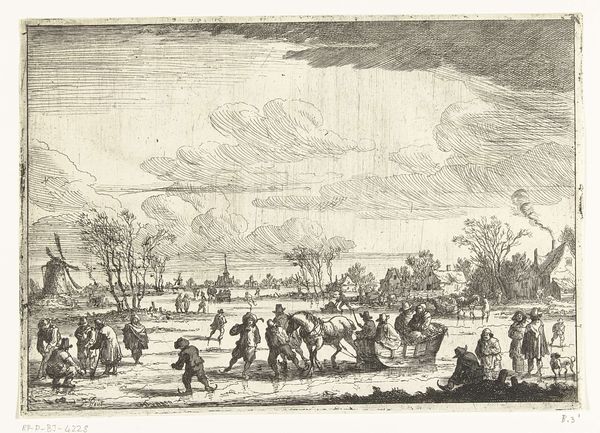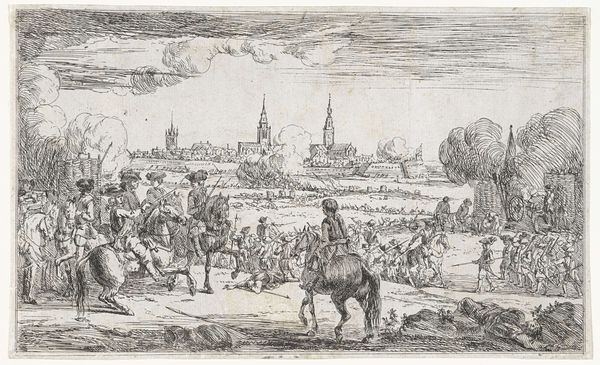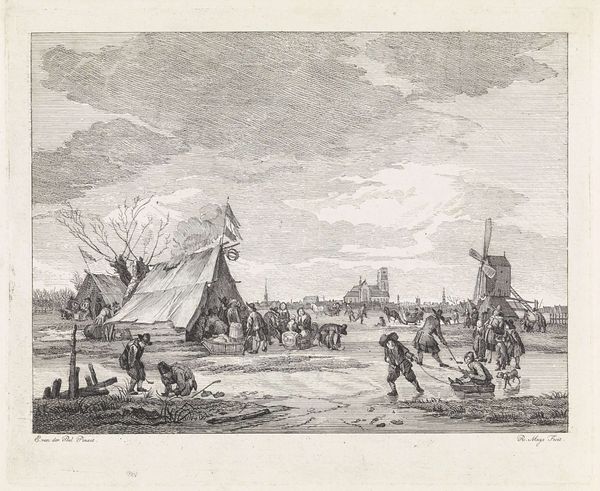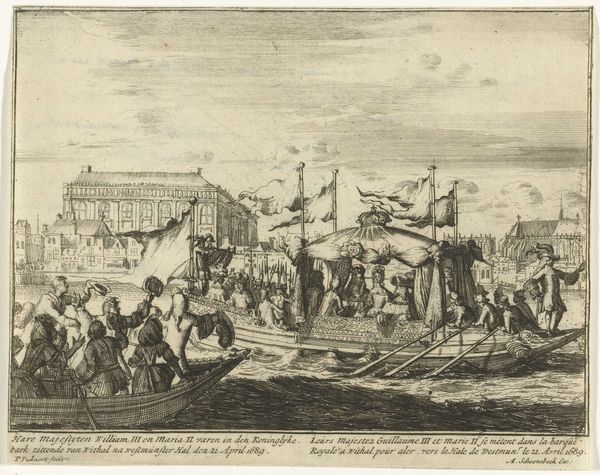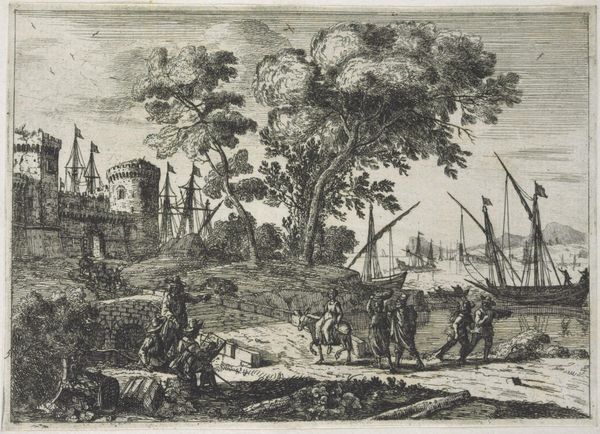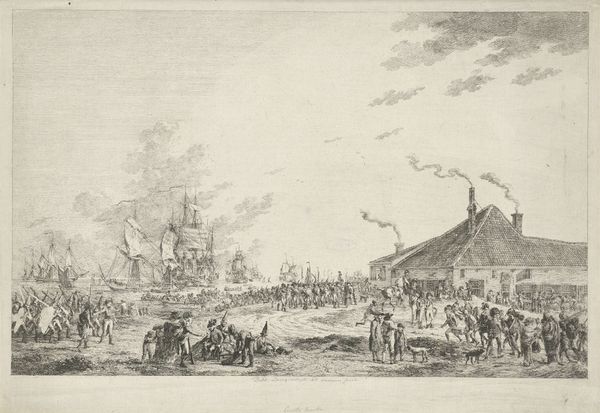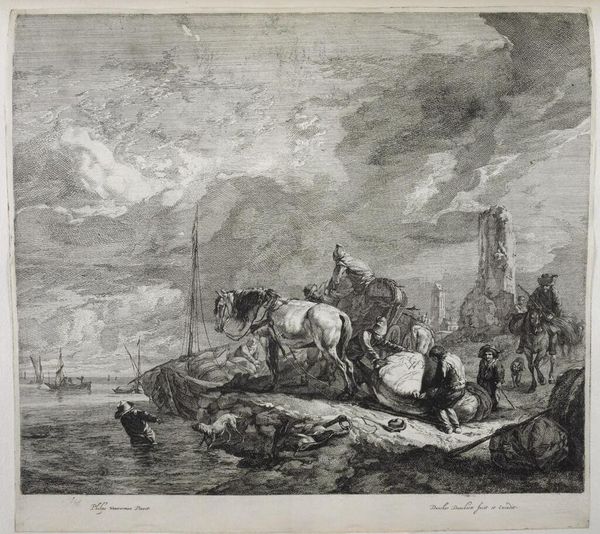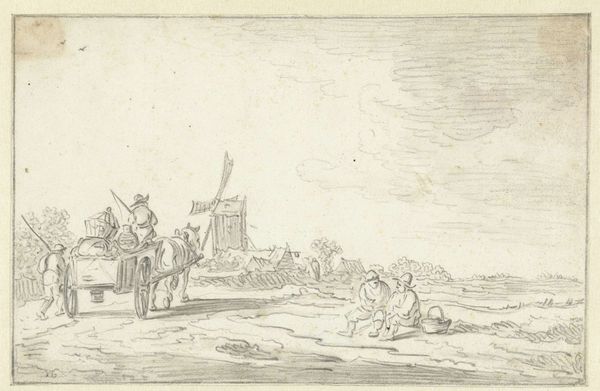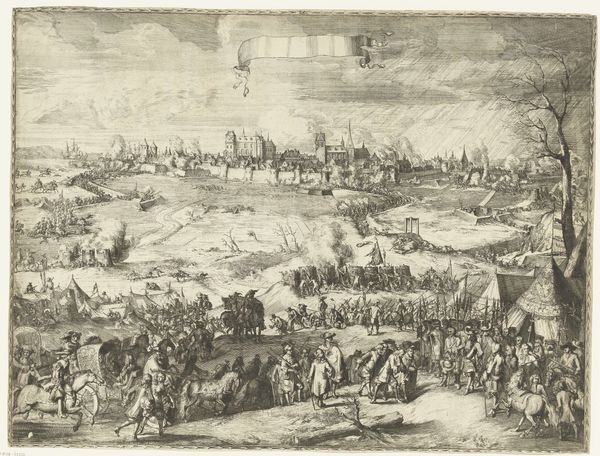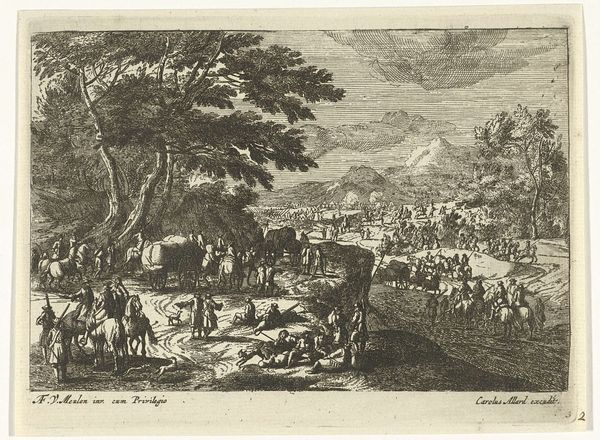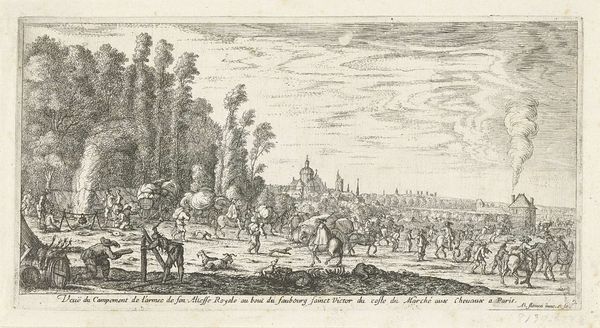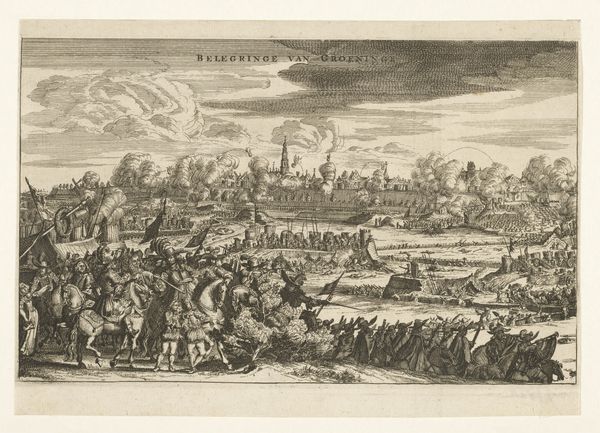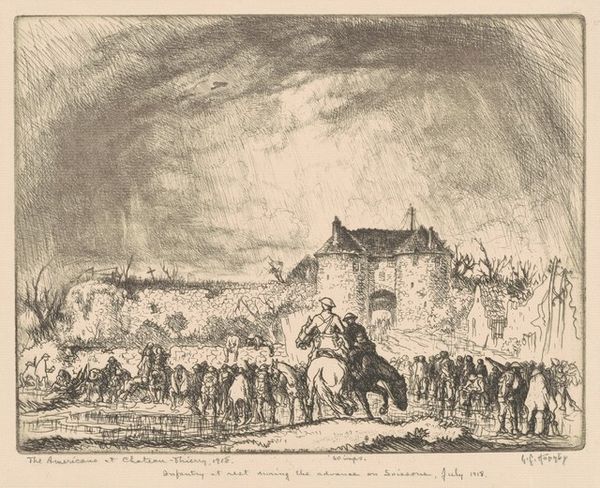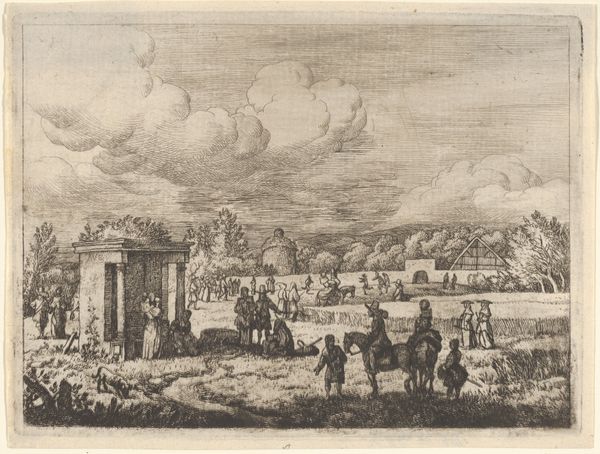
print, engraving
#
dutch-golden-age
# print
#
landscape
#
genre-painting
#
engraving
#
realism
Dimensions: height 190 mm, width 273 mm
Copyright: Rijks Museum: Open Domain
Editor: Pieter Bout's "Skaters on the Ice", a print dating from sometime between 1664 and 1719 and housed right here at the Rijksmuseum. My first impression? It’s surprisingly lively, all those tiny figures animated on the frozen surface. Curator: Indeed, the composition masterfully captures the vivacity. Observe how the engraver uses a tight array of hatch marks and textures in order to develop depth. The eye follows the dynamic curve of the skaters across the expanse. Editor: I find the tent and windmill quite interesting. Those temporary structures feel so…improvised. Makes you wonder about the vendors making a living on this frozen marketplace. And what kind of ink would be used for engraving a print like this? What's the impact of it in relation to the paper texture and durability? Curator: The ink's materiality is indeed secondary, but essential for relaying representational information. Semiotically, the positioning of those very structures creates a binary opposition of temporary/permanent, highlighting the transience of human leisure against enduring society as expressed through the windmill and church. Editor: I would venture further by saying that these choices reveal a fascinating intersection between labor and leisure. You have all these folks enjoying skating and games on the ice, which gives a context about life in that specific era. How was it done in comparison with current making practice and what were the differences in skill? Curator: Of course. Bout cleverly presents an almost encyclopedic summary of life during the Dutch Golden Age. The careful ordering of spatial perspective allows us to “read” into different strata of social interaction within a unified landscape. It invites a semiotic decryption in order to engage the spectator. Editor: Absolutely, and looking beyond those figures, considering how they make the ice surface. The way that the action of producing ice is then made visible through an aesthetic creation has impact in understanding society and practices. Curator: Precisely. Its value as a visual record is only strengthened by an elegant compositional structure with balanced tension and rhythm. Each line contributes to its structural integrity. Editor: Analyzing art can be like stepping into the past, getting a tangible understanding of old ways and resources. Curator: Leaving with an enriched appreciation of visual communication is an aim indeed.
Comments
No comments
Be the first to comment and join the conversation on the ultimate creative platform.
